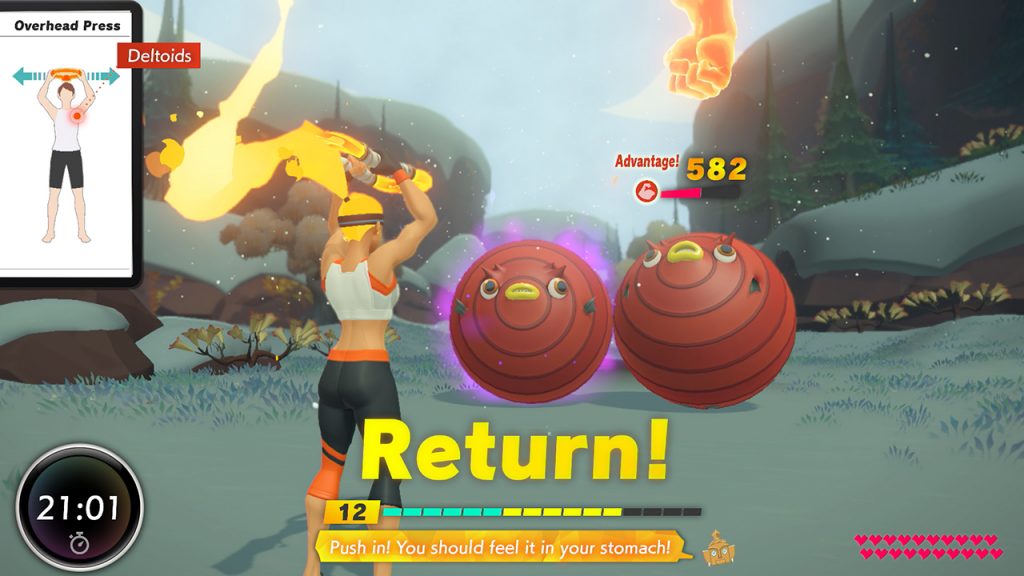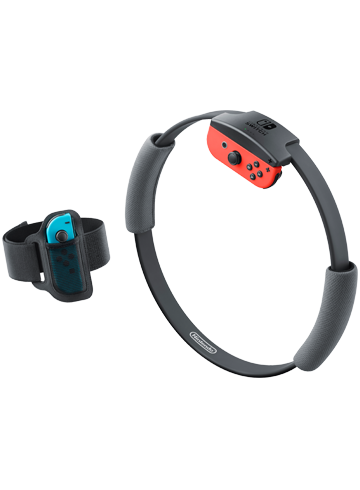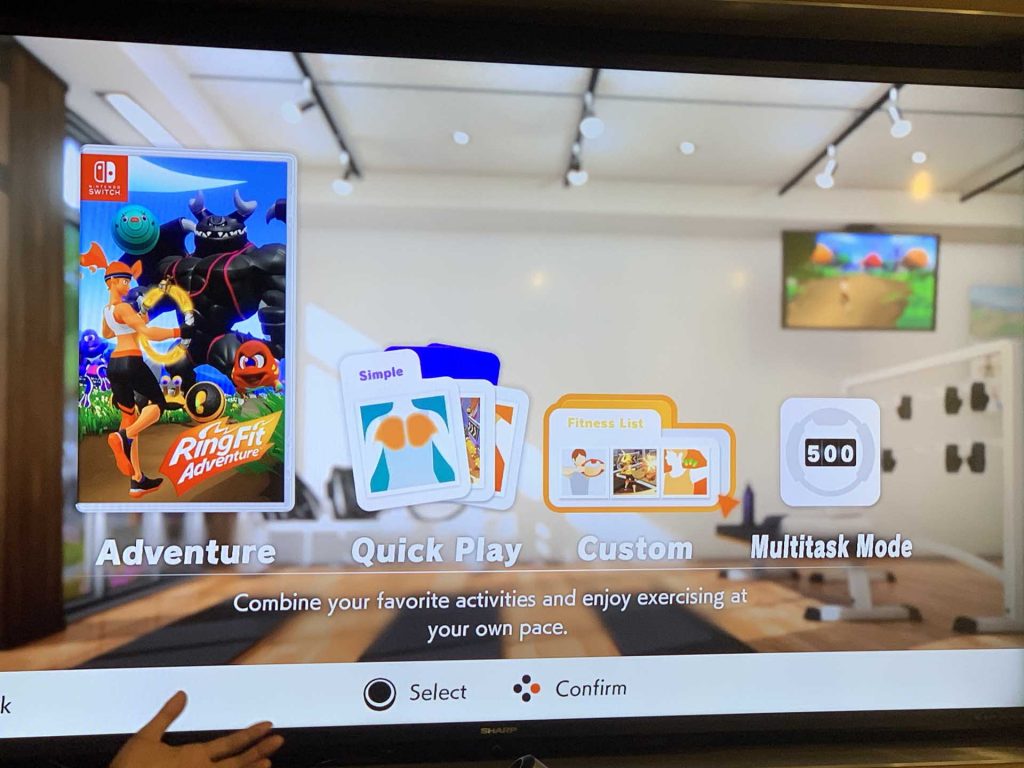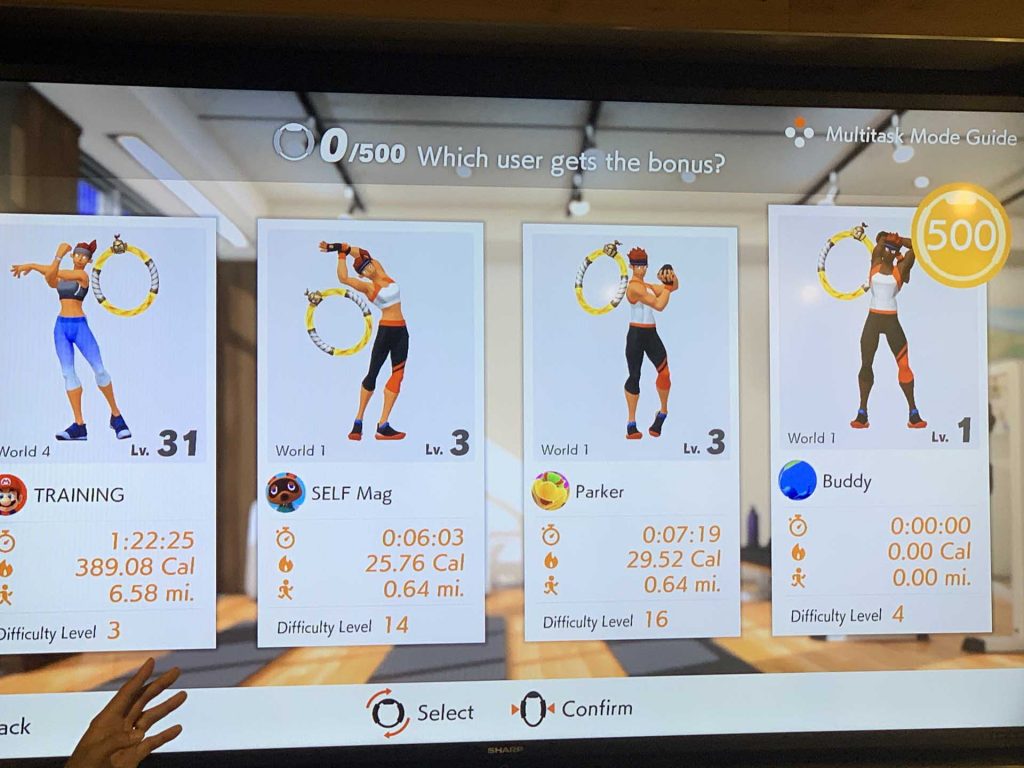Just a couple weeks ago, Nintendo teased and subsequently announced their latest quality of life project with Ring Fit Adventure, and its accompanying peripherals, the Ring-Con and Leg Strap. While the announcement came as a bit of a surprise, this kind of programming isn’t unheard of from Nintendo, and in all fairness we probably should have been expecting something like this given the free range of motion that the Joy-Con provides.
Even as someone who enjoyed Wii Fit when it first came out years and years ago, I have to admit that I was a bit dubious on the idea of Ring Fit Adventure. Mostly, I wasn’t entirely sure how well it could keep my attention in the long-term, and I wasn’t sure if I was ready to doom the Ring-Con to the same fate as my Wii Balance Board: sitting in a cabinet collecting dust.
Yesterday, I got the unique opportunity to try Ring Fit Adventure first hand, and I can confidently say that not only are my doubts about the upcoming game squashed, but that I have every intention of getting it on release.
Game First, Exercise Second
Perhaps the most important thing to say about Ring Fit Adventure, before anything else, is that it’s surprisingly robust. And this, of course, makes the game fun — a key element to most games, in case you weren’t aware. Even in just the first 30 or so seconds that I started playing, it was clear that Nintendo took a lot of feedback and opinions on their previous fitness entries into consideration while developing Ring Fit Adventure, and it’s even more clear that that’s worked out in their favor.
What’s really interesting about Ring Fit Adventure is that it doesn’t hide its intentions to be a fitness game, but it embraces the fact that it’s a video game first and that it’s main purpose is to entertain you, with the added benefit of keeping you active and moving. Unlike Wii Fit, Ring Fit Adventure is based in an actual plot, with a story, a main antagonist, and a clear objective to accomplish. There are other modes within the game that focus solely on the exercise aspect and the use of the Ring-Con for fitness, but the core game is an RPG, collectibles and random encounters and all.

Aptly titled Adventure Mode, this portion of the game is just straight up fun. I caught myself actually working up a bit of a sweat in the demo room, because in order to move through the game at all you have to keep up a constant jog. Battling enemies has you performing different fitness moves, and certain types of moves might have an advantage over certain types of enemies — not unlike type or weapon advantages in Pokémon and Fire Emblem, respectively.
So, for example, you might find some types of enemies are particularly weak against stomach exercises, while others will fall quicker to arm or leg exercises.
The game’s commitment to fitness and fun is impressive and clearly defined, and the integration of exercise into a genuinely enjoyable, playable game is huge advantage. I imagine that a lot of people will find themselves opening up Ring Fit Adventure to actually play it, rather than just as a way to get some quick reps in. Additionally, the rail shooter style of the game (to the effect that your character is on a set path they move forward on) naturally allows for different, multiple pathways to explore, which allows for quite a bit of replayability in getting to see everything the Adventure has to offer.
Additionally, the difficulty of the game can be adjusted based on how much you exercise in your daily life, outside of the game. So for people who are particularly fit, they’ll find that their attacks do less damage to enemies, prompting them to perform more reps in order to progress through the same areas. The entire thing can be tailored to your fitness needs, and this is an important accessibility feature for all types of gamers that I’m really glad to hear has been thought out. Basically, everyone regardless of fitness level will benefit from Ring Fit Adventure’s fitness benefits.

Gushing about the fitness integration aside — the game looks beautiful. The graphics are vibrant and colorful and the stylistic choices of the artists behind the game are phenomenal. It’s a pleasure to look at, the sound effects and music are beyond satisfying, and quite honestly the game is comfortable. Neither the Leg Strap or the Ring-Con was as obtrusive as I was afraid they might be, and while we’re on the topic…
The New Peripherals
I think, understandably so, consumers are always a bit wary of seemingly gimmicky new ways to play on any given console. After all, if you’ve got to shell out extra money for a controller that only works for a specific game, don’t you want it to really feel necessary or worth it?
It’s clear that without the Ring-Con or the Leg Strap, Ring Fit Adventure wouldn’t be possible. I can say for certain that either of these peripherals will be used for any other games in the future (they’re pretty inherently tied to this game specifically), but I can say that I’m pleasantly surprised with how they worked.

Let’s start with the Leg Strap. Honestly, there’s not much to say about it, and I mean that in the best way. Once it was on me, I legitimately forgot about it entirely. It was comfortable, it didn’t feel unnatural, and it didn’t restrict my range of movement in any way. All it did was allow me to play the game, but it felt good enough that genuinely didn’t even realize it was still strapped to my leg half the time.
The Ring-Con, on the other hand, is a little more involved, as to be expected. The majority of the game is controlled and takes place with the Ring-Con in hand(s), and while it certainly works as a “fitness” controller it doesn’t actually feel unnatural. All the movements and exercises that require its use – and the different positions you have to hold it in – feel intuitive, and I only had to spend about a minute with it before it really stuck and I started enjoying it. It is, admittedly, a fun controller to use, and I think that comes from how well it lends itself to the controls of the game.
For a Focus on Fitness
Outside of the Adventure Mode, I also got a quick glance at the other options the game has to offer.

For people looking for a quicker workout or something that isn’t tied to a larger story, or for the person who is using the game as a fitness tool first, Quick Play offers a chance to play minigames and do smaller or shorter exercises that are all independent from each other. These programs are identified by what part of the body they train, so you can pick whichever ones suit your needs and capabilities.

Custom Mode is interesting in that it allows you to create and customize a playlist of exercises of sorts, and that customization includes reps and the amount of time you want to spend on each muscle group or specific exercise. Because of the longer nature of this mode, I didn’t get a chance to try one of these playlists out; however, each profile does get several slots for different custom sets, allowing each user to create a multitude of different exercise sessions for a variety of different muscle groups. And, these Fitness Lists can be edited at any time, so if you feel like you’ve moved past what you originally set for yourself, just add on a few more reps!
Finally, Multitask Mode — the mode that doesn’t even require the Switch to be powered on to play it. Unlike the rest of the game, Multitask Mode is powered entirely by the Joy-Con set within the Ring-Con, and is a mode that encourages players to find time to exercise even when they’re busy doing something else.

So, stuck sending emails at your desk all day? Put the Ring-Con between your legs and do some inner thigh squeezes. Trapped in a subway car that isn’t moving? Set the Ring-Con on your shoulder and do a couple shoulder presses. The possibilities are pretty endless with this mode, but what’s special about this is that as you use the Ring-Con, you’ll rack up bonus points that can then be used on different profiles in the game.
And finally, when you’re all done and you want to see how you’ve done for the day, you can put your thumb on the IR sensor of the Joy-Con and it can actually read your pulse and relay it back to you. Seeing this in real time, I have to say it’s maybe the coolest use of the IR sensor on the Joy-Con I’ve seen to date.
Final Thoughts
Ultimately, I have to admit: while I was a bit skeptical on the actual execution of Ring Fit Adventure, I was sold in a very short period of time once I actually had the Ring-Con in my hands. The game is fun, the visuals are beautiful, and not only does it feel like an effective way to exercise, but an enjoyable and customizable one that can suit exactly what I’m (or anyone else is) looking for.
If you’re looking for a different kind of game experience, or just a way to start exercising after a long break, for the first time, or just without leaving your home, I think Ring Fit Adventure is going to be a great – no pun intended – fit for you. If you get the chance, I’d really recommend giving it a try. I think it’ll surprise you.
Ring Fit Adventure releases on the Nintendo Switch on October 18th of this year.
Leave a Comment


